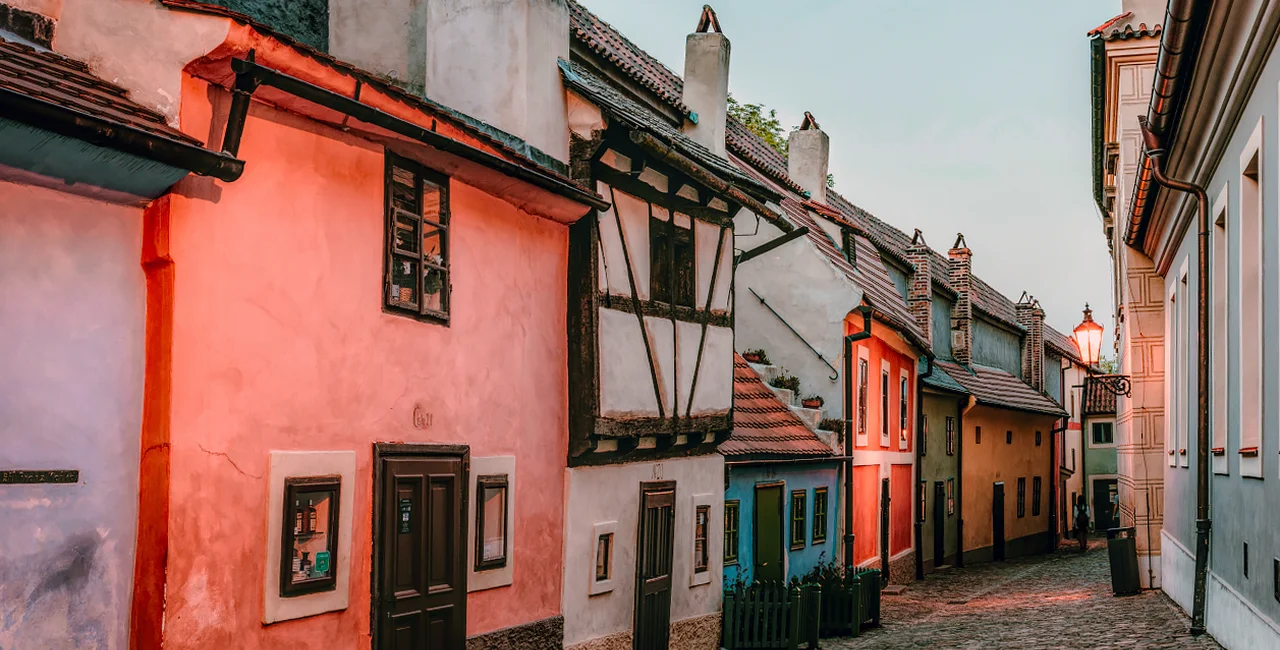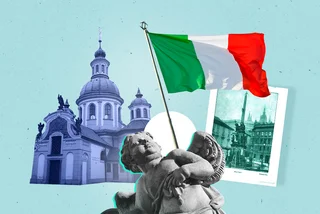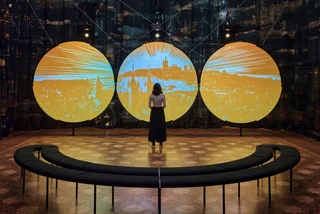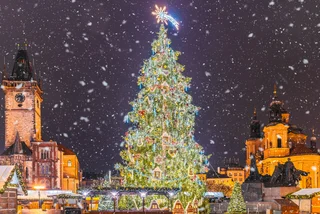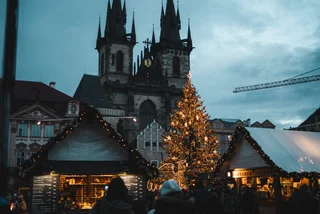Tucked away within the stone walls of Prague Castle lies Golden Lane (Zlatá ulička), the foundation stone of which was laid on Sept. 16, 1597. This storied lane's rowhouses have nestled against the walls between the northern ramparts of the Castle and the old Supreme Burgrave's House since the late 16th century, sheltering families, artists, and castle staff for generations.
Myths and legends surrounding its origins are associated with the production of gold but historians say that goldsmiths never lived here. Here are some lesser-known facts about this narrow alley of living dollhouses that is one of the most visited spots in Prague Castle today.
Names can be deceiving
Zlatá ulička was originally called Zlatnická, referring to goldsmiths who may have lived there in the 16th century. Historians say that, given the lane's location in a poor section of Hradčany, this is highly unlikely. It's also been said that members of the castle guard with gold markings on their uniforms resided there, though it's widely believed that the name was a sarcastic one, poking fun at the poverty of the alley.
Rudolf's real role
In 1597, Emperor Rudolf II granted permission to the Prague Castle guards to wall up nooks in the castle and establish chambers within the resulting niches. The guards built and financed the homes themselves, later buying and selling them amongst each other. Originally housing various castle employees, the homes were later rented to outsiders. Over time, additional structures like outbuildings and fireplaces expanded the homes into the narrow alley. By the 19th century, the alley had become so cramped it was barely a meter wide in places. Following renovation in 1864, only the homes along the northern wall remained.
Golden Lane by the numbers
- How much does it cost to rent on Golden Alley? A 34-square-meter ceramics shop at number 23 was rented by the Prague Castle Administration in early 2020 for CZK 200,000 Czech per month.
- According to castle historians, the houses had the original dimensions of 400 cm in width and 220 cm in the depth of the arch.
- There are a total of 24 houses, and one of the smallest ones can be found at the end of the lane, which is according to historians, the smallest house in all of Prague with a single room, filling the walled niche that existed when the house was built.
- Prior to the Covid pandemic, 97 percent of visitors to Golden Lane were foreigners.
Tourist legacy began in the 1900s
During the late 19th century, residents of Zlatá ulička realized the economic potential of their homes and alley and leveraged the myths and legends that shrouded the lane to their benefit, making it a popular tourist attraction. Visitors paid to view the normally closed Deer Moat from windows or buy postcards of alley life.
No alchemists, but artists and fortune tellers
Golden Lane has numerous literary associations. Franz Kafka lived at number 22, his sister Otília Davidová's house from 1916-1917, where he wrote most of his short story collection The Country Doctor. Lyric poet František Halas, Nobel Prize winner Jaroslav Seifert, and poet Vítězslav Nezval gathered at number 12. German novelist of the occult Gustav Meyrink set his mythical At the Last Lantern here.

A famous Prague fortune teller Matylda Průšová, also known as Madame de Thébes, lived in the alley before World War II at the house with the owl, crystal ball, and cat signboard. Sadly, Průšová who predicted the downfall of the Third Reich, was arrested by the Gestapo and died during interrogation.
Color scheme designed by Czech animation legend
Following WWII, the Czechoslovakian President's Office purchased the homes from owners and commissioned architect Pavel Janák to oversee the overall renovation in 1955. Painter and filmmaker Jiří Trnka designed the facade color schemes during this restoration process. Residents inhabited the area, however, until 1953.
Glimpse the past today
House number 20 best preserves the appearance of the 16th-century dwellings, with its exposed half-timbered framing still intact. The original diminutive scale is represented by house number 13, whose facade does not enter the alley at all. This is because number 13 remains the sole residence entirely nestled within the arch of the fortification wall. Glimpses of the chamber's fitted architecture can still be seen today.
Golden Alley opening hours + free entry
April–Oct., 9 a.m.–6 p.m.
Nov.–March, 9 a.m.–4 p.m.
Closed: Dec. 24
After closing time, access is free without a tour of the houses, from 5 p.m. to 11:00 p.m. The exhibits, however, are closed.
Visit hrad.cz for more information.












 Reading time: 3 minutes
Reading time: 3 minutes 